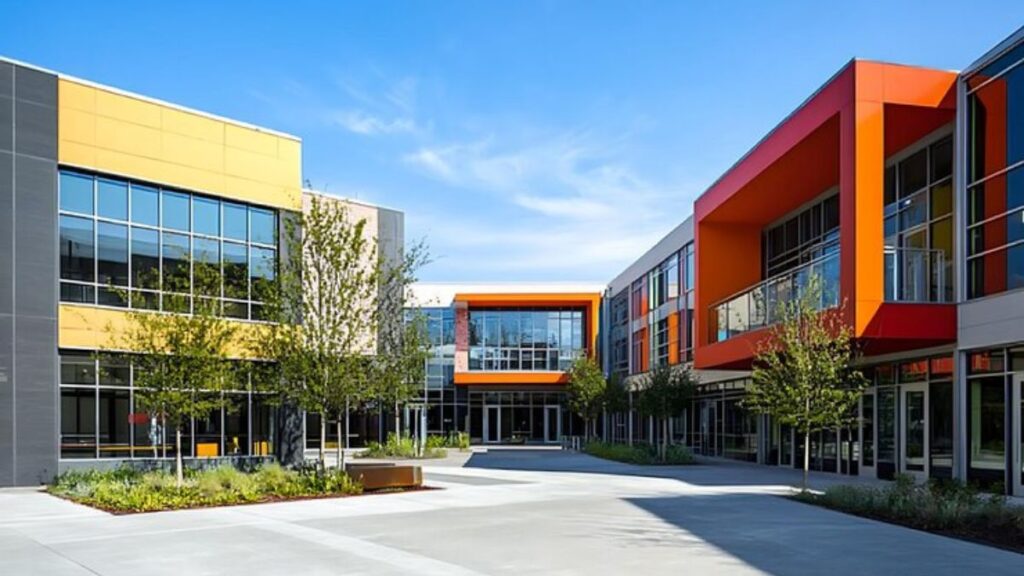Introduction: The Growing Connection Between Schools and Businesses
In today’s rapidly evolving world, the partnership between schools and businesses has become more crucial than ever. Education and the corporate world are no longer functioning in separate bubbles. Instead, there’s a growing trend of collaboration that bridges the gap between academic learning and real-world applications. This relationship is transforming how students learn, how businesses develop talent, and how communities thrive.
Schools are preparing students not just academically but for future careers. Meanwhile, businesses are realizing that a skilled, innovative workforce begins with strong education systems. Together, they form a powerful ecosystem that drives innovation, economic development, and community growth.
Benefits of Collaboration Between Schools and Businesses
The benefits of cooperation between schools and businesses are vast and impactful, not just for the institutions involved but for students, employees, and the broader community.
Workforce Readiness
When schools and businesses work together, students gain insights into the expectations and realities of the workplace. Businesses can offer internships, mentorships, and hands-on training opportunities that equip students with relevant skills. This makes young graduates more prepared and competitive in the job market.
Curriculum Relevance
Business input can help schools align their curricula with current industry needs. By understanding what employers are looking for, educators can adjust lesson plans to teach relevant technologies, soft skills, and problem-solving methods. This ensures that education keeps pace with market demands.
Innovation and Technology Transfer
Businesses often have access to cutting-edge technology and industry best practices. By collaborating with schools, they can introduce students and faculty to innovative tools and methodologies. Schools, in turn, can provide fresh ideas and theoretical insights that businesses can adopt.
Economic Development
Communities benefit when local schools and businesses collaborate. Schools produce job-ready graduates, reducing unemployment. Businesses find local talent, reducing recruitment costs. This creates a virtuous cycle of prosperity and sustainability.
Should you wish to explore other topics, head to our main blog. We’ve got more!
Real-World Experience for Students
Experiential learning has become a critical component of education. Collaborations between schools and businesses create opportunities for students to learn beyond textbooks.
Internships and Apprenticeships
These programs allow students to immerse themselves in real business environments. They develop professional behavior, understand industry challenges, and often transition into full-time roles post-graduation.
Career Days and Company Visits
Hosting students at business locations or organizing industry-specific seminars at schools helps them visualize career paths. It demystifies corporate culture and exposes them to diverse job roles they might not have considered.
Project-Based Learning
Businesses can propose real-world problems for students to solve as part of their coursework. This not only enhances learning but also benefits companies with innovative solutions from a fresh perspective.
Support for Teachers and Educational Programs
Businesses can also contribute to educational improvement by supporting teachers and school programs.
Professional Development for Educators
Industry-led training sessions can help teachers stay current with trends and tools in their fields. For example, a software company could train computer science teachers on the latest programming languages or platforms.
Funding and Resources
Schools often face budget constraints that limit access to technology or modern facilities. Businesses can step in by donating equipment, funding scholarships, or sponsoring learning labs.
Guest Lectures and Workshops
Industry professionals can visit classrooms to share insights, discuss case studies, or conduct workshops. This adds a real-world dimension to theoretical teaching.
And before you go, be sure to read through some of our other helpful posts!
Tailored Curriculum Development
One of the most strategic benefits of school-business collaboration is customized curriculum development.
Industry-Centric Courses
Schools can co-develop courses with businesses, ensuring the content reflects current industry needs. This is especially useful in technical education, where changes happen rapidly.
Certification Programs
Some businesses partner with schools to offer industry-recognized certification programs. These credentials improve students’ job prospects and validate their skills.
Soft Skills Integration
Apart from technical knowledge, companies emphasize communication, teamwork, and leadership. Schools can incorporate soft skills training through collaborative programs and simulated environments.
Business Advantages of Partnering with Schools
While much focus is given to the educational benefits, businesses also gain significantly from these partnerships.
Access to Emerging Talent
By working with students early on, businesses can identify and attract high-potential talent. Internships often serve as a pipeline for future employees, reducing hiring risks.
Community Engagement and CSR
Partnerships with schools allow companies to contribute meaningfully to their communities. This enhances their reputation and fulfills corporate social responsibility (CSR) goals.
Fresh Perspectives and Innovation
Young minds bring creativity and unorthodox thinking. Businesses can benefit from student input, especially during collaborative projects or innovation challenges.
Customized Training for Future Employees
By helping design training and education programs, businesses can ensure that graduates come equipped with the exact skills they need.
The Role of Technology in Strengthening School-Business Partnerships
Digital tools are making it easier than ever for schools and businesses to connect and collaborate.
Online Platforms for Internships and Mentorships
Web-based portals can streamline the process of matching students with internship opportunities. These platforms also support virtual mentoring and training sessions.
Virtual Reality and Simulations
Businesses can help schools incorporate VR tools that simulate real-world job scenarios. This is particularly useful in fields like healthcare, engineering, and manufacturing.
Learning Management Systems (LMS)
Collaborative use of LMS platforms allows real-time sharing of industry content, tutorials, and assessments that enhance traditional education.
Examples of Successful Collaborations
Numerous case studies highlight how effective collaboration can yield impressive results.
STEM Partnerships
Tech companies often partner with schools to enhance science, technology, engineering, and mathematics (STEM) education. They provide software, coding boot camps, and even scholarships.
Healthcare Sector Support
Hospitals work with nursing schools to provide hands-on training, simulate patient care, and even employ students during their training period.
Manufacturing Apprenticeships
In industrial towns, factories collaborate with vocational schools to develop apprenticeship programs that lead to full-time jobs.
Challenges in Building Effective Partnerships
Despite the benefits, these partnerships come with challenges that both parties must address.
Different Priorities
Educational institutions and businesses operate on different schedules and have different priorities. Aligning goals and timelines requires communication and flexibility.
Resource Constraints
Not all schools have the infrastructure to support business partnerships, and not all businesses have the bandwidth to engage regularly.
Data Privacy and Security
Sharing information between institutions requires careful handling of student data and adherence to privacy laws.
Cultural Differences
Academic and corporate cultures often differ in terms of pace, decision-making, and expectations. Bridging this gap takes effort and understanding.
The Future of Education-Industry Collaboration
As automation and artificial intelligence reshape the workforce, the need for a responsive and agile education system becomes paramount. Schools and businesses will increasingly need to work hand-in-hand to prepare students for jobs that don’t even exist yet.
This future demands lifelong learning, cross-disciplinary skills, and adaptive thinking—all of which can be cultivated through strong school-business collaborations. With the right vision and effort, these partnerships can unlock unlimited potential for individuals and society as a whole.
Conclusion
The synergy between schools and businesses is no longer optional—it’s a necessity. In a world where skills, knowledge, and adaptability determine success, this collaboration holds the key to unlocking a more innovative, inclusive, and sustainable future. By working together, schools prepare students for the workforce, and businesses help shape the next generation of thinkers, doers, and leaders. The path forward is clear: stronger partnerships lead to stronger communities.
And before you go, be sure to read through some of our other helpful posts!
FAQs
Why is it important for schools and businesses to collaborate?
Collaboration prepares students for the workforce, ensures relevant education, and supports community and economic growth.
How can businesses help schools improve education?
Businesses can offer resources, mentorships, internships, and help in developing industry-aligned curricula.
What benefits do businesses get from partnering with schools?
They gain access to emerging talent, improve their public image, fulfill CSR goals, and benefit from fresh ideas.
What are common challenges in school-business partnerships?
Misaligned goals, limited resources, and cultural differences can pose challenges but are solvable with communication and planning.
How can technology support school and business collaboration?
Digital tools enable virtual internships, remote mentoring, real-time content sharing, and simulated job training environments.







